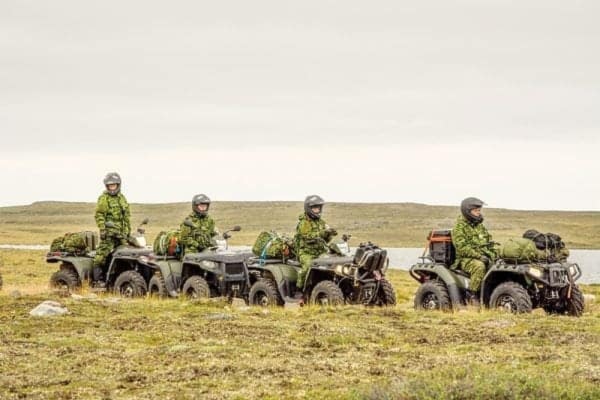Planes are a common sight for the people of Rankin Inlet, but the touchdown of a Royal Canadian Air Force CC-177 Globemaster got the hamlet talking.
The plane, which landed Aug. 14, carried troops from the south to begin Operation Nanook.
Currently in its 10th year, the annual, two-week operation runs until Aug. 25 and will see a peak of 260 participants, according to Joint Task Force Nunavut senior public affairs officer Maj. Josée Bilodeau. The 260 estimate includes members of the Canadian Army, Royal Canadian Air Force and Joint Task Force Support Component. Participants included members of government departments and members of 1 Canadian Ranger Patrol Group (1CRPG).
The first week of the operation involved training for military personnel, who set up camp out on the tundra with the assistance of rangers from across the Kivalliq region, including Chesterfield Inlet, Whale Cove, Arviat and Rankin Inlet.
The Rangers were essential to the operation, according to Maj. Samantha Burch.
“They're our guides to the North,” she said.
“They provide an intimate working knowledge (of the land) that we don't have.”
Rangers served as guides for troops who headed out on the land on Aug. 16 and 17, choosing the best route for all-terrain vehicles across rocky -- and sometimes swampy -- tundra.
They also walked participants through survival training, teaching them how to make tools, track and build fires, as well as educating them about ground search-and-rescue, fishing and how to process a caribou.
The company that was on the land Aug. 17 was comprised of an eight-person command headquarters and three platoons.
Burch said the operation helps to train participating units to work together.
“Combined arms exercises are very important,” she said.
“It increases our inter-operability.”
Bilodeau said many of the participants came from the Arctic Response Company Group with 38 Canadian Brigade Group headquartered in Winnipeg.
